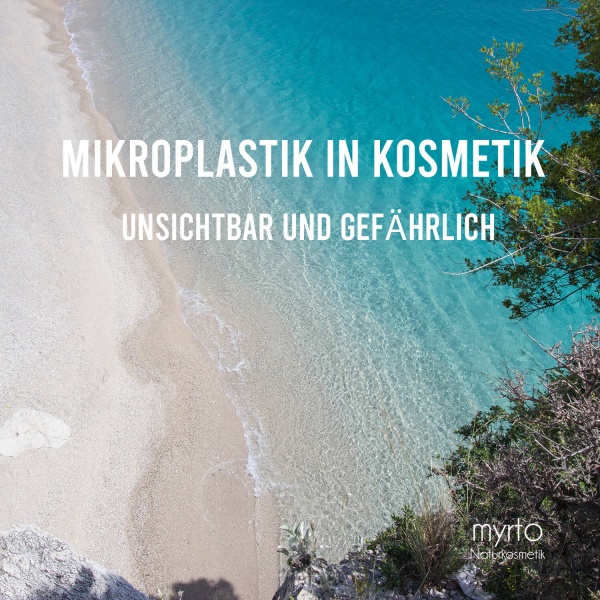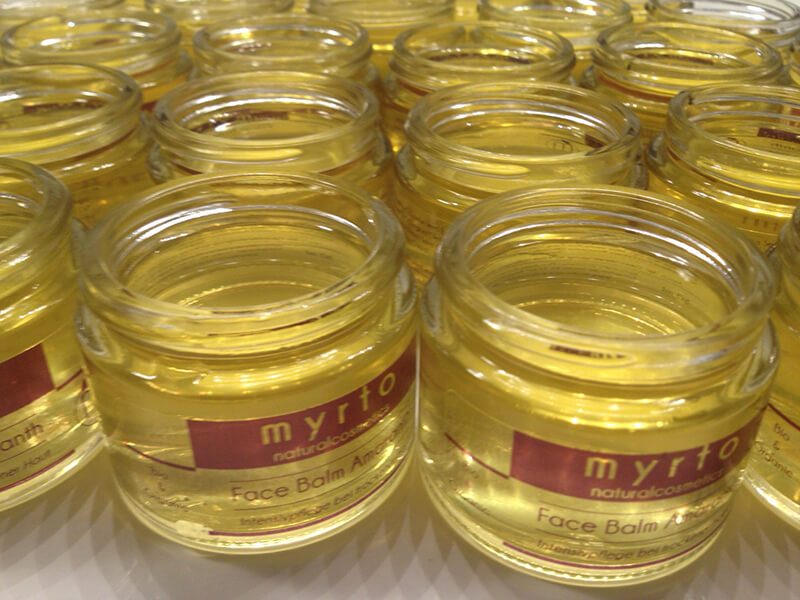Microplastics in Cosmetics and Environment
Hidden plastic is still present in many shampoos, conditioners and shower gels as well as in scrubs and skin creams. The solid, liquid or waxy plastic particles serve as abrasives, binders or cheap fillers. They are intended to provide the product‘s typical consistency, color and smoothness. The problem: The micro-polymers pass through sewage on arable land, into rivers and finally into the sea. There, the particles are absorbed by plankton, fish and other marine life. Consequently, microplastics destroys the ecosystem, ending up on our plate via the food chain. Plastic is hardly biodegradable, decomposition often takes hundreds of years. According to a study by the Fraunhofer Institute 2018, estimated 330,000 tons of microplastics are released in water, soil and air annually in Germany alone.
Damaging Consequences of Microplastics for the Human Body
Microplastics are toxic to cells. Current research shows that microplastic particles penetrate cells within 24 hours of exposure and accumulate primarily near the cell nuclei. Cell damage and even cell death increases with increasing amounts of microplastics and exposure time. Scientists have detected microplastics in various human organs such as the placenta, lungs, heart, spleen, liver and also in the brain (Environ Int January 2021, 146: 106274). In the brain, the microplastic particles can promote inflammation, neurological disorders or diseases such as Alzheimer's.
What is Microplastic?
According to a definition of the German Environmental Agency, all plastic particles smaller than five millimeters are called microplastics.
A distinction is made between primary and secondary microplastics. Primary microplastics are industrially produced as starting material for plastic products in form of granules. Secondary microplastic results from the decay and abrasion of larger plastic parts, such as packaging and bags.
How do you recognize Microplastics in Cosmetics?
In order to recognize and avoid microplastics in cosmetics, you should scan your products with the Codecheck app. Greenpeace also offers a checklist of no-go ingredients for download:
Acrylate copolymer (AC)
Acrylate Crosspolymer (ACS) • Dimethiconol
Methicone
Polyamide (PA, Nylon)
Polyacrylate (PA)
Polymethyl methacrylate (PMMA) • Polyquaternium (PQ)
Polyethylene (PE)
Polyethylene glycol (PEG)
Polyethylene terephthalate (PET) • Polypropylene (PP)
Polypropylene glycol (PPG)
Polystyrene (PS)
Polyurethane (PUR)
Siloxane
Silsesquioxane
No Microplastic in myrto Products
In myrto products you will not find any microplastic - principally and because this is not allowed at all with natural cosmetics. For a natural and gentle peeling we use sun-dried mineral earth instead. As an environmentally friendly alternative for polymers such as silicone oils in hair care you will find highly effective plant extracts from CO2 extraction, proteins from cereals, betaines from sugar molasses or beta-glucan from oats in myrto products to strengthen the hair.
Quality Awareness
Even though there is certainly a lot to be improved, we try to contain environmental damage and support, for example, environmental projects of BUND and NABU. In our manufactory, we rely to 100% on renewable energies, reduce our paper consumption as much as possible, and consistently refrain from unnecessarily overpacking our products.
Our conviction of sustainability and naturalness is also reflected in manufacturing our myrto products: preferably our myrto facial care products are packed in minimalist glass bottles and jars. Exceptions are the microbially sensitive creams in airless dispensers with recycled plastic. As a result, we are able to realize optimally skin-friendly formulations with valuable natural ingredients without conventional preservatives. For our shampoos and conditioners as well, we use airless dispensers instead of glass bottles - the risk of breakage and injuries being usually too high in the slippery shower area. The dispensers are made in Germany, consisting of 100% polypropylene, and being fully recyclable.
Topic bioplastics: Although we are eagerly awaiting it: Unfortunately, there are still no suitable packaging bottles available, made of pure plant based bioplastics, naturally decomposing in the environment in due time. There are attempts by the industry to produce biodegradable plastics with proportions of sugar cane, cellulose or corn, being principally biodegradable and compostable. However, the plant based content of such packaging is only a few percent currently - the main part is of petrochemical origin. Current bioplastic packaging is therefore more likely to be considered a marketing measure.




